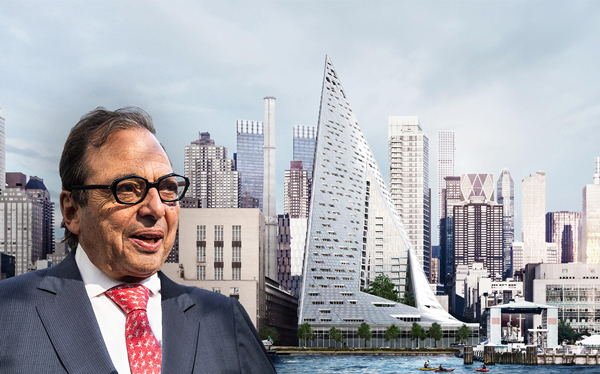Trending
Saga of the superblock: How Durst made good on his massive bet on West 57th St.
Developer's three rental buildings are leased up

After nearly 20 years of development, two rezonings and several changes in plans, the Durst Organization has closed a major chapter on its Hell’s Kitchen “superblock.”
Last week, the developer leased out the final unit in Via57, the 709-unit rental building designed by the Bjarke Ingels Group. This was the last of the 1,372 apartments across Durst’s three residential buildings on the block to be rented out — roughly two decades after the developer took control of the sites. The final apartment at Via57 to be rented was a four-bedroom unit for a little over $13,000 per month, said Dan Mogolesko, vice president of residential leasing and operations for Durst. The apartment, on one of the building’s upper floors, spanned a little under 2,000 square feet.
“The epic of that block is now complete,” Jordan Barowitz, a spokesperson for Durst, said on Monday.
Via57 is the third residential building to be constructed on Durst’s superblock — an area bounded by West 58th Street, 11th Avenue, West 57th Street and 12th Avenue — that the developer controls through a 99-year lease inked in 1999. The property was originally zoned for manufacturing use, and Durst initiated two rezonings, first to build the Helena, a 597-unit rental tower at 601 West 57th Street, and then for Via57. The company went through several plans for the site — a medical facility, a school, office building, a car dealership and a hotel — before settling on a rental building.
Durst started leasing Via57 out in March 2016. The company faced several challenges in the form of a supply glut, an unconventional building design and a somewhat remote location.
Due to the building’s unusual shape — technically a tetrahedron — upper-floor apartments lose some square footage and become narrower. For a three- to four-bedroom unit, tenants tend to have certain expectations as to what’s included: a walk-in kitchen, a reasonably-sized living room, Mogolesko said. So, for units closer to the building’s apex, other perks were offered, such as ample outdoor space.
“What we had was unique: how about four terraces?” Barowitz said.
Still, like scores of new development projects these days, Durst offered concessions to prospective tenants. The developer paid broker fees and Mogolesko said tenants with up to 24-month lease terms were offered two to three months free rent, in part due to ongoing construction at the building when people started moving in. The concessions were also offered to compete with Long Island City, Williamsburg and other areas of the city that have seen an increase new development rental supply.
“There’s a lot of competition. I don’t think the market’s slowing down. I think there’s just more availability,” Mogolesko said.
The building has 178 different floorplans, so while having a world-renowned architect design the project was a major selling point, Via57’s design slowed leasing activity in some cases as prospective tenants tried to figure out what configuration worked best for them, Mogolesko said. The waterfront tetrahedron also attracted some visitors who were more interested in taking a look inside the building than actually renting out an apartment, he noted.
To address the potential transit issues faced by a building at the edges of western Manhattan — overlooking the West Side Highway — Durst has a private shuttle at the building that runs regularly to Columbus Circle. Barowitz noted that the area has grown considerably since they started developing the superblock.
“When we planned this building, that reality didn’t exist,” he said. “We thought we’d need to build a community on site.”




